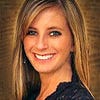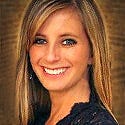IEEE President-Elect Tackles the Digital Divide
Despite recently retiring, Karen Bartleson is taking on the enormous task of closing the digital divide via a spot on the Department of Commerce's newly created board.

Karen Bartleson retired earlier this month after a 35-year career in the semiconductor industry, most recently after having spent 20 years at Silicon Valley-based chip software maker Synopsys. But retirement for Bartleson means that she'll be taking over as IEEE president in 2017 and serving on the US Commerce Department's Digital Economy Board of Advisors, helping to bring a free and open Internet to all Americans.
So, "retirement" is a term she uses loosely.
Bartleson is currently the Institute of Electrical and Electronics Engineers Inc. (IEEE) 's 2016 President-elect, a role that will help her transition into presidency next year. She will be the standards organization's third female president. ("Usually I'm the first woman of all kinds of stuff, so for once I am not first," she jokes.)
And, she was also recently appointed to a newly created board under the Department of Commerce along with 17 other big names like AT&T Inc. (NYSE: T)'s Senior Executive Vice President of External and Legislative Affairs James Cicconi, CEO of GE Digital and Chief Digital Officer for General Electric Co. (NYSE: GE) William Ruh and YouTube Inc. CEO Susan Wojcicki. The Board's goal is to provide recommendations on how the government can "advance economic growth and opportunity in the digital age," by -- for one thing -- providing Internet access to all Americans.
Bartleson sees her role on the committee as to bring technologists into the conversations and make sure policymakers understand the technical ramifications of the policies they propose. It's a big job and the appointment is a testament to Bartleson's impressive career in the communications industry, as well as her enthusiasm for helping improving the world for the next generation.
She shared her global, technical point of view with Women in Comms on how Internet access can benefit women, how she's fostering the next generation of engineers and more.
Figure 1:  Karen Bartleson, 2016 President-elect and 2017 President, IEEE
Karen Bartleson, 2016 President-elect and 2017 President, IEEE
Interested in joining Women in Comms on our mission to champion change, empower women and redress the gender imbalance in the comms industry? Visit WiC online and get in touch to learn more about how you can become a member!
Women in Comms: How does closing the digital divide and bringing Internet access to all benefit women in particular?
Karen Bartleson: I see it as a huge opportunity. I was working with someone writing a book about The Internet of Women, and I reviewed the first couple of paragraphs. The premise is that we as women will have amazing opportunities through the Internet that we never had before. There's a small operation in Colorado called Women's Bean Project. You can order bean-related products online for underprivileged women to get them into business to be able to support their families and be a productive member of the community. I wouldn't have heard of them if it weren’t for the Internet. Small businesses like that are helping underprivileged women, who can thrive on the Internet.
Another example is Kiva.org; it's fantastic. It's a micro-lending operation that is purely Internet-based. You can go and lend $25 to someone around the world and they pay you back with Interest. I pick women-based businesses in Pakistan or in Ghana or in South America, and these women are doing things like baking bread for sale or selling medicine or raising sheep. Because of this Internet-based organization called Kiva, I'm able to contribute to a better quality of life for women, not just in the US but everywhere. We have fantastic opportunities that we never did before because of the Internet. They are small and large and still both very rewarding.
WiC: What are your priorities for the IEEE when you take over as President in 2017?
KB: First and foremost, my favorite groups within IEEE are Young Professionals, which are graduates over the last 15 years -- young engineers, up and coming, taking on the future and solving all the ugly problems we created in the world like climate change, terrorism and food shortages and all these terrible things. It's one of my focus groups. The other is Women in Engineering with all their activities that are global as well. Those are the target audiences that I want to pay special attention to in addition to general membership.
In terms of goals and work products, we want to make IEEE a nimble, forward-looking organization. There are some inefficiencies in how we lead... The second thing is the IEEE in the past couple of years has gotten involved in global public policy -- working with European members of IEEE and working with the European governments to help with their economic and technical goals. We also have a committee looking at Africa and how IEEE can bring better education to Africa, because it will be one of the hugest untapped labor pools in a few years.
WiC: Tell us more about the work you do with young professionals and how you help prepare them for careers in engineering.
KB: We have all kinds of different events, starting at the student level with student branches. Young students enthusiastic about engineering will get together with their colleagues and create all types of activities like micro-volunteering with clubs and challenges, like computer software coding challenges. They are enthusiastic and have camaraderie. When they graduate they often have a job and move away from the university town and lose track of each other. That's where young professionals come in. They are actively seeking out people in their area or online -- another great use of Internet -- to say, "I've been working at a company and see you've just joined; how can I help you navigate politics of the company or find an apartment?" I like to help them get involved with the governance of IEEE to help broaden their capabilities and hone abilities.
For example, I had a young professional who was interested in finance, so I put him on our investment committee so he can learn the insides of investments in a half billion-dollar organization. Another opportunity is a couple of young professionals who grew up in Bosnia, who were displaced as young children. One lives in Canada and one in Australia and they want to hold an event among young professional engineers to discuss the need to boost their economies. They would like to stay at home but have to leave home countries to find opportunities. We'll host an event to figure out how IEEE can help them start local industries to stay in their home countries and boost themselves as young professionals and future leaders. It's rewarding to do it on a global scale.
WiC: How many women would you say are in the young professionals organization?
KB: We have 420,000 members around the world and 100,000 signed up as young professionals. People like me are allowed to join because we support their activities, so I don’t know the actual number of young people but the amount of people who focus on this and support it is 100,000. I see more females in the young professional ranks than in the older generations, by far. I don’t have those statistics, but in the IEEE, we're still running less than 10% women around the world, which is indicative of our industry. It's tough but getting better. I see stats that say women in STEM globally runs around 30%.
At Cal Poly San Luis Obispo, the dean of engineering was a woman for five to six years. There is about 25% women enrolled, and it was about 8% when I was there. She has an interesting theory I like: She believes that once we get to 33%, that'll be a tipping point for many more women to be encouraged to go into the STEM fields. If you're a woman sitting in a room with two men, you feel comfortable, not weird, whereas if you are one woman out of 10, you feel weird. I've experienced it all my life. You close your eyes and keep going and pretend you don’t feel weird. I love the idea that if we can get to one third, we'll have a climate where it won't be strange or unusual. How we get there? There are so many different theories, but it does seem to be getting better especially for young professionals and especially in other parts of the world.
WiC: How is the landscape different for women in tech in other parts of the world?
KB: I visited UAE and Armenia, and their universities would have half female students. The challenge in the Middle East is once they graduate from college, they start a family and never enter the industry. We have the problem of not having enough starting out in the university to build talent for the industry. Different cultures have different challenges, yet I'm optimistic.
WiC: What can we do to start to fix the exposure problem here in the US?
KB: There is bad advertising that goes on -- "engineering is math problems all day with a bunch of social misfit geeky people." Instead, if we communicate that engineering is where you create things and solve problems for humanity, that is appealing to men and women alike. That is what the appeal to me is. I love math and science, and I can do cool things for the world. I can build buildings or bridges or solve climate change and bioengineering problems. I don’t think we have gotten the word out that this is what it's all about.
There's a company called Goldieblox that is so cool. It's a great example of starting young. I bought them for my niece. She's putting a machine together. Showing girls that it's fun.
WiC: What is your biggest piece of personal advice for a female engineer in the comms industry?
KB: My advice is don’t get discouraged; be proud of what you do; use your gender appropriately, meaning we do think in really neat leadership terms. We make good managers, but all of these things pertain to men also, it's not just a woman thing, but things like, really have courage and when opportunities come along, don’t be afraid. One of my favorite things my mom would say is, "What's the worst that can happen?" It often gives you a lot of courage to say, "If I screw up this project, other people have too." Have courage; be brave. I think in general that the engineering profession is very respectful of each other. Of course there are always challenges as human beings, but I've found my whole career, women are respected by their male counterparts. There is an occasional awful story that happens, but it's a good field.
— Sarah Thomas, 

 , Director, Women in Comms
, Director, Women in Comms
About the Author(s)
You May Also Like




_International_Software_Products.jpeg?width=300&auto=webp&quality=80&disable=upscale)







